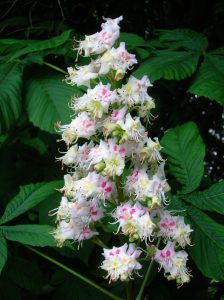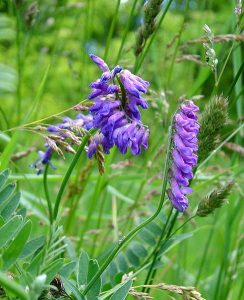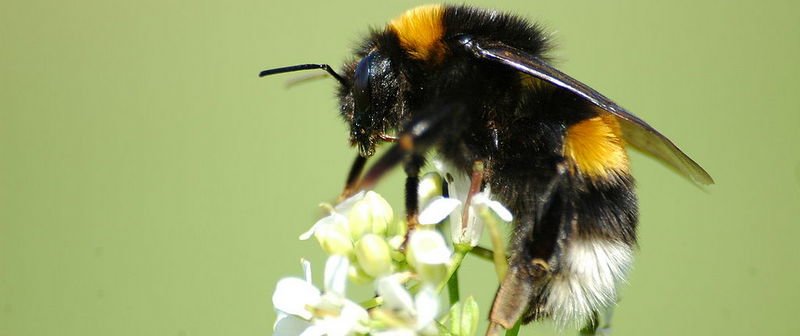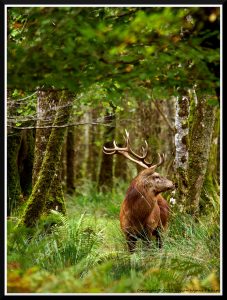Ireland’s Wildlife Contributor Albert Nolan gets up close and personal with the bees of Limerick and discovers that the City really is buzzing!
I pass quietly through the city streets pausing at every corner to scan the buildings for birds, or peeking into an overgrown garden in the hope of finding a few insects. I adjust my bumblebee net to a more discreet position so as not to draw too much attention to myself and allow the sounds of the city to fade into the background.
Today I am on my way to meet Veronica Santorum who is Co-coordinator of the Limerick Buzzing project. This is an environmental awareness and more importantly action project that is working within the community to help wild bees. We will be exploring the banks of the canal and discovering some of its amazing wildlife and also how our city bees are coping with the stresses of urban living.
After a few minutes I arrive at The Lock bar and to the amusement of a passing couple I start to search through the leaves of a tall Lime tree hoping to discover a hidden moth. While this bar is a well-known meeting spot for couples the idea of an insect date is probably alien to many. Veronica arrives and soon we are busy examining the tree. It has cast its cool shade over many a life story, but hidden among its branches nature leads an equally fascinating life. Trees are important feeding stations for wildlife and as we check the leaves we find small holes. These are made by birds as they pluck the tiny insects that feed on them. The Lime tree is also excellent for bees as they come to collect pollen and nectar from the flowers. They are also part-time farmers as they milk the sticky honeydew that greenfly produce as they feed.

We move along and pause underneath a magnificent horse-chestnut tree in full flower. Veronica explains how insects and plants communicate with each other by using colour. When the horse-chestnut flowers need to be pollinated they have a prominent red spot that attracts bees and this fades to a more subtle yellow once the bee have visited. Nearby the rough and cracked bark of an ancient Sycamore tree provides plenty of hiding places for insects and its long green flowers are another source of early nectar and pollen for insects.
Just past the bridge we peer over the wall and discover a hidden garden. Nature has colonised one of the smooth supports of the bridge and turned hard concrete into a mini woodland. Buddleia and sycamore are growing up through a moss floor and on the wall we find harts-tongue fern, valerian, figwort and meadowsweet. Helping bees is about recognizing the value of these wild corners and not being overzealous when it comes to tidying up. Looking across the river we size up the canal island, eagerly anticipating a potential trip and the wildlife stories awaiting to be revealed.
While a good diversity of plants are vital for bees they also need places to build their nests. The old red bricked bridge over the canal is an important habitat as it has a variety of different sized holes where they will build their nests. Bricks trap the heat of the sun during the day and releases it slowly at night-time creating a stable temperature for the developing larvae.
By the edge of the path there is a natural woodland edge. Tall sycamores are at the back followed by flowering lilac and the smaller flowers at the front. The different heights attract a wide range of species and I hear the songs of a blackbird, dunnocks and great tit. Blue and green flies flit between the branches and on a rolled up Nettle leaf we find a tiny black caterpillar. A bee comes briefly into range but with a steep drop just in front of us we cannot catch him in the net. The way to the nature reserve on the island is blocked by a muddy stream that is carpeted in bright yellow marsh marigold.
I learn a new word as Veronica explains that the caterpillars droppings (called frass) can be used as an indicator as to the health of a habitat. We slide a sheet under the hedge and gather some of the frass. If you have a lot of caterpillars feeding you will have a good quantity.
We stop by a tall ivy patch and watch as a songthrush devours the berries. For a few minutes the bird ignores us before disappearing noisily over the wall. Ivy produces its flowers in late summer and this provides a last bounty for late-flying insects. On the wall a brave garden snail is beginning his epic climb. He is a favourite food for birds, especially the recently departed songthrush who use stones (known as anvils) to break the hard shells and reveal the soft body.
Small changes make a big differences for wildlife and bees. Leaving the grass along the wall to grow long would create a haven for wildlife. Ideally cut a narrow strip along the edge of a public path or track so that the vegetation doesn’t encroach, and leave the remainder to nature. Cut it once a year in late autumn, and the various wildflowers and grasses will flourish, creating a beautiful display for walkers and a rich feeding area for butterflies, moths and of course bees.
Nestled in a corner of the wall we find sow thistle, whose milky sap was once prescribed as a treatment for warts.

Underneath a poplar tree we find some bush vetch growing. This one of the best flowers for bumblebees. A member of the pea family, its fruits are tiny, hard peas that we used to eat when we were younger. If we planted more of this pretty wildflower in our community green spaces it would be of huge benefit insects.
Our second bee of the day appears, foraging down low to the ground. It is a white-tailed bumblebee and the queens can be up to 20mm long. If you see a large bee try not to panic: they tend to be peaceful creatures and will only defend themselves if they feel threatened. Take a step back and allow one of nature’s hardest workers to continue its important job of pollinating our flowers and vegetables.
This particular bee could be searching for a nest site, and Veronica explains that each species emerges at different times through the spring and summer, so it’s important that there is a succession of nectar rich plants. This is something to consider as we plan our garden planting schemes and tidy towns flowerbeds. Including herbs, fruit like strawberries and apples and leaving a few dandelions to grow will provide a good supply of food throughout the spring and summer.
We pass under the bridge, and hear willow and sedge warblers calling from the reed beds by the pond. Bees benefit from a variety of habitats and while an acre of wildflowers is brilliant for wildlife it will only suit certain species. Having areas of bare hard soil and stumps of trees creates a home for bees that excavate small tunnels and lay their eggs inside. Both these features are becoming scarce in the landscape but thankfully are still common on this walk.
Other insects catch our attention. Species like the stunning blue-tailed damselfly and seven spot ladybirds are always a treat, but time, as always, is against us and we have to head for home.
Our last stop is a piece of wild ground with a mixture of bare ground, scattered trees and wildflowers making it a prime habitat for bees. A common carder bee is busy feeding and birch seedlings are starting to transform this open space into a tiny urban woodland. Cuckoo flower is growing in the wetter patches, and closer inspection reveals the tiny eggs of an orange-tip butterfly on its stems.
Many thanks to Veronica for sharing her time, knowledge and energy to give me a better appreciation and understanding of the bees living within the city boundaries.
This year Limerick Buzzing has been running an interesting project called “Strawberry Days”. They have been asking members of the public to grow two pots of strawberries, and using data from the fruit yield to help determine how well local bees are faring. For more information on this fun and tasty project and to learn more about our local bees, upcoming events and training days please check out the Limerick Buzzing website. www.limerickbuzzing.ie
Please join me on Limerick City Community Radio at 4.30pm every second Saturday for my show “Wild about Limerick”. Tune in online or on 99.9fm, and if you have a story or event you’d like to share please get in touch.
Comments/questions to [email protected] or 089 4230502.









